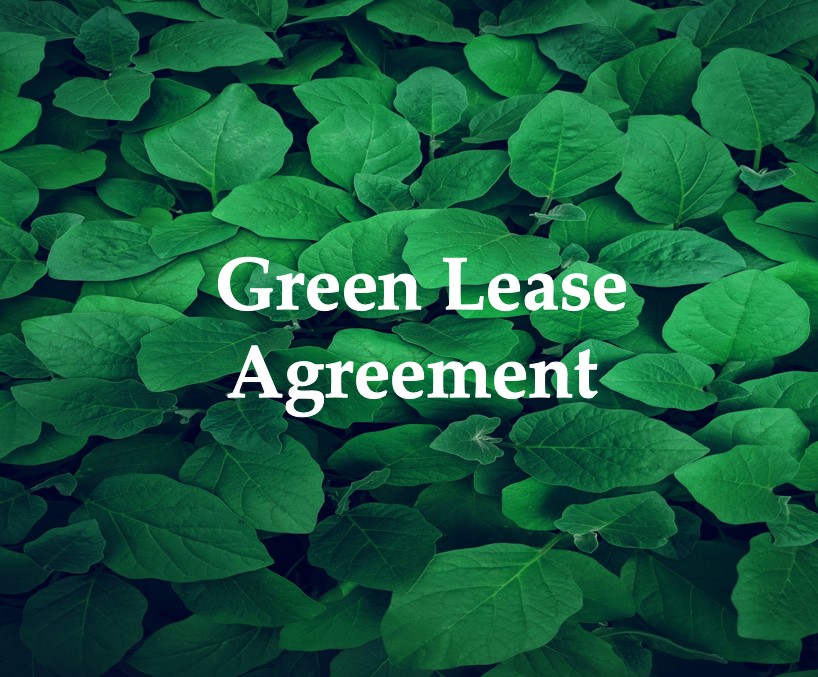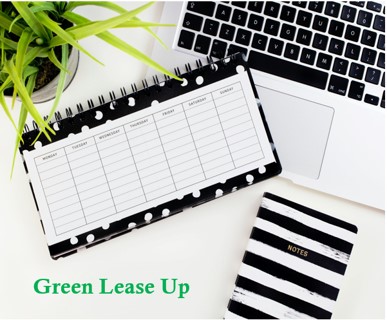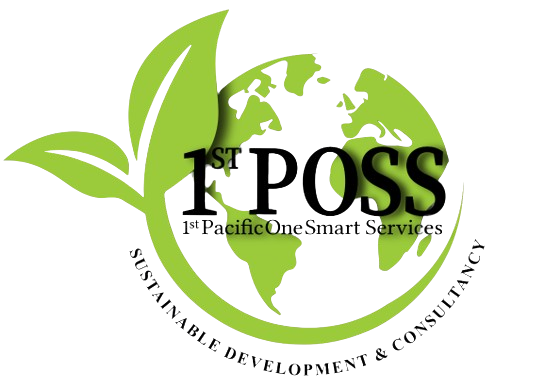
What is a ``GREEN LEASE``?
Generally speaking, a green lease is a ‘commercial lease’ or ‘residential lease’, which is also known as high-performance leasing, energy-aligned or energy-efficient lease that aligns tenant and landlords’ interests for investments, into financial incentives of sustainability or energy measures in lease documents.
However, recently, according to Department of Energy, Green Leases are recognized both by owners and renters of large and small commercial offices, retail and industrial properties, and multifamily building. And you, as a homeowner, these same sustainable measures and practices can benefit you as well.

Financial incentives of sustainability and energy measures are realigned into a new lease clause found in traditional leases to establish a Green Lease. Landlords and tenants can establish relationships that incentivize sustainability in energy and water use, as well as occupant health, by implementing the ‘goals’ set out in these restructured contracts.
Green Leasing is a set of processes that are interconnected with other operational functions of the property, such as creating, communicating, delivering and exchanges ideals and principles of sustainability, which means educating tenants of the sustainable goals of People, Planet, and Profit. Simple steps, such as adjusting the overall length or limit of lighting or water load, can significantly reduce energy and utility use while at the same time the tenant will not experience any inconveniences and will maintain renter control over the space lighting and water demands.
Benchmarking is a great way to get a sense of where the trend is headed in your neighborhood, so if you are a Property or building owner, or investor, knowing what the ‘green-lease trends are is key. So, the planning starts with determining exactly what your current goals are, current use and operations of the property are. We then look at the current lease and its language to establish the current status of the lease and determine its coverage. The language of your lease will determine, how green you lease will be. After all, a green lease specifies how tenants and landlords agree to use energy. The GOAL is to cut energy use and potentially create saving. It is still a lease, but now it’s a high-performing, energy-efficient lease.
With a green lease, the property or building owner maintains control of the building’s systems operations. However, the tenants get to control how much energy they individually consume. When you set your ‘goals and priorities’, which are spelled out in the green lease, you identify what gets done, whether it’s what the operation income looks like, or building comfort and building performance or reduced carbon emissions. When the tenant and landlord have different objectives on what to improve, and who pays, and who benefits, this is where the language in the Green lease allows for these conversations to take place in complete transparency and hopefully eliminating any possible negative reasons to enter into a “Green Lease” in the first place.
Collaboration between the landlord or building owner and tenant or occupier will significantly improve the scope of the work to be done and narrow the time of implementation greatly. The building owner and tenant must find ways to agree in ways to share data and be transparent about steps necessary to improving the environmental performance and energy and water consumption. Building tenants and owners should and must have joint and similar targets as it relates to the Environmental Performance of the Building, its recycling rates, water reduction and energy conservation and uses. All stakeholders must share in the achievements and frequent work-shops or meeting should be set up to engage with each other and see the what the actual Environmental Performance is, where the saving are and how others can be made and most importantly, learn how to improve the efforts both of you are making.
Energy efficiency has a huge potential benefit of green leasing of multifamily building, due in part, to the age of the building stock as opposed to single family, owner-occupied homes. Green leasing practices not only reduce energy use but also reduce cost to residents. Green Leasing not only can result in being more energy efficiency but when you factor in water efficiency and other environmental and sustainable practices it can result in improved health and comfort as well. Green Leasing is particularly beneficial in residential multifamily building where an agent performs tasks on behalf of the principal, or building owner, and the agent does not act with the principal’s best interests don’t align. A huge percentage of energy use can be affected by this relationship between the building owner and the agent.
Evaluate & Improvement
To help ensure the efficient operation of the building, realigning the cost structures through a green lease will allow both the building owners and tenants, to not only save money but to conserve resources as well in the process. As both investors and building owners look into prioritizing their property improvements to align with the initiatives necessary to contribute to both sustainability and health goals, their decisions will be critical. Working with a company like 1stPOSS will be essential for tenants and property owners to understand the impacts of their decisions that will be made around the upgrade of systems that not only fit the tenant space, but the costs associated with them as well.
Building owners and investors interests and the reality around personal health and sustainability, should align with the cost of ‘green construction’ and with the costs associated with sustainable operations. Another ‘benefit’ of having a green lease, not only establish a contract for sustainability, but it ensures transparency and sets up a relationship that benefits both the building owner and tenant as co-workers in sustainability and energy efficiency.
Result
The science of ‘Climate Change’ and the effects it has on the planet, is clear now. We know that we can save lives, reduce chronic disease and improve the health of a great number of people in a lot of communities, not only within your local area but globally as well, just by transitioning to a low-carbon economy and lowering greenhouse emissions.
And with building accounting for over 40% of these harmful environmental emissions means that they must be improved with real-world cost involved and ultimately that cost is incurred by the building owners. The need for green leasing will be essential to help bridge the divide between, a green environmental building and the real-world cost of producing it and this benefits the ‘socially conscious’ tenants and responsible property owner alike.
